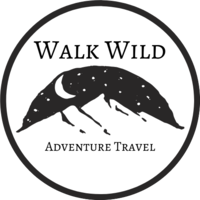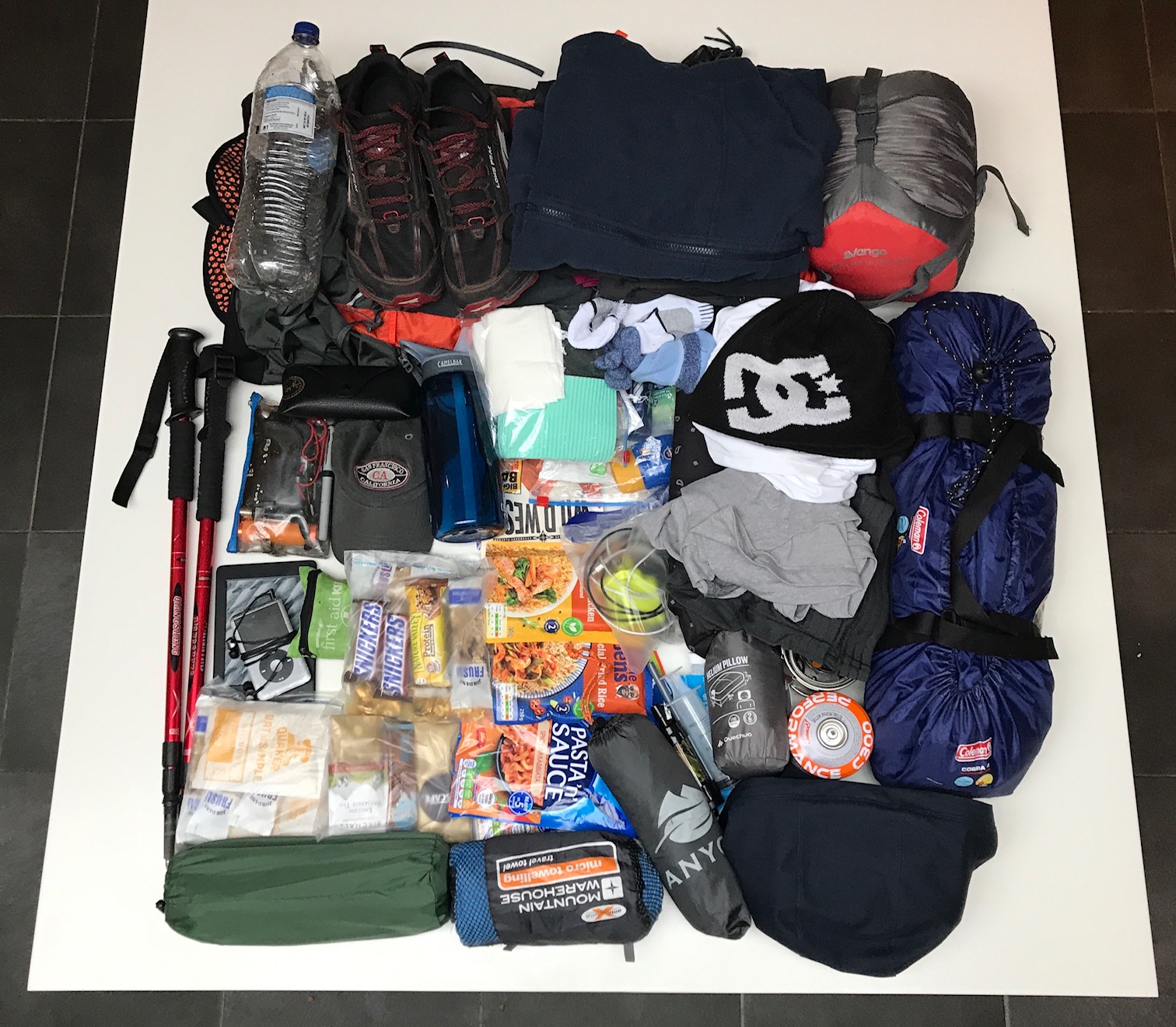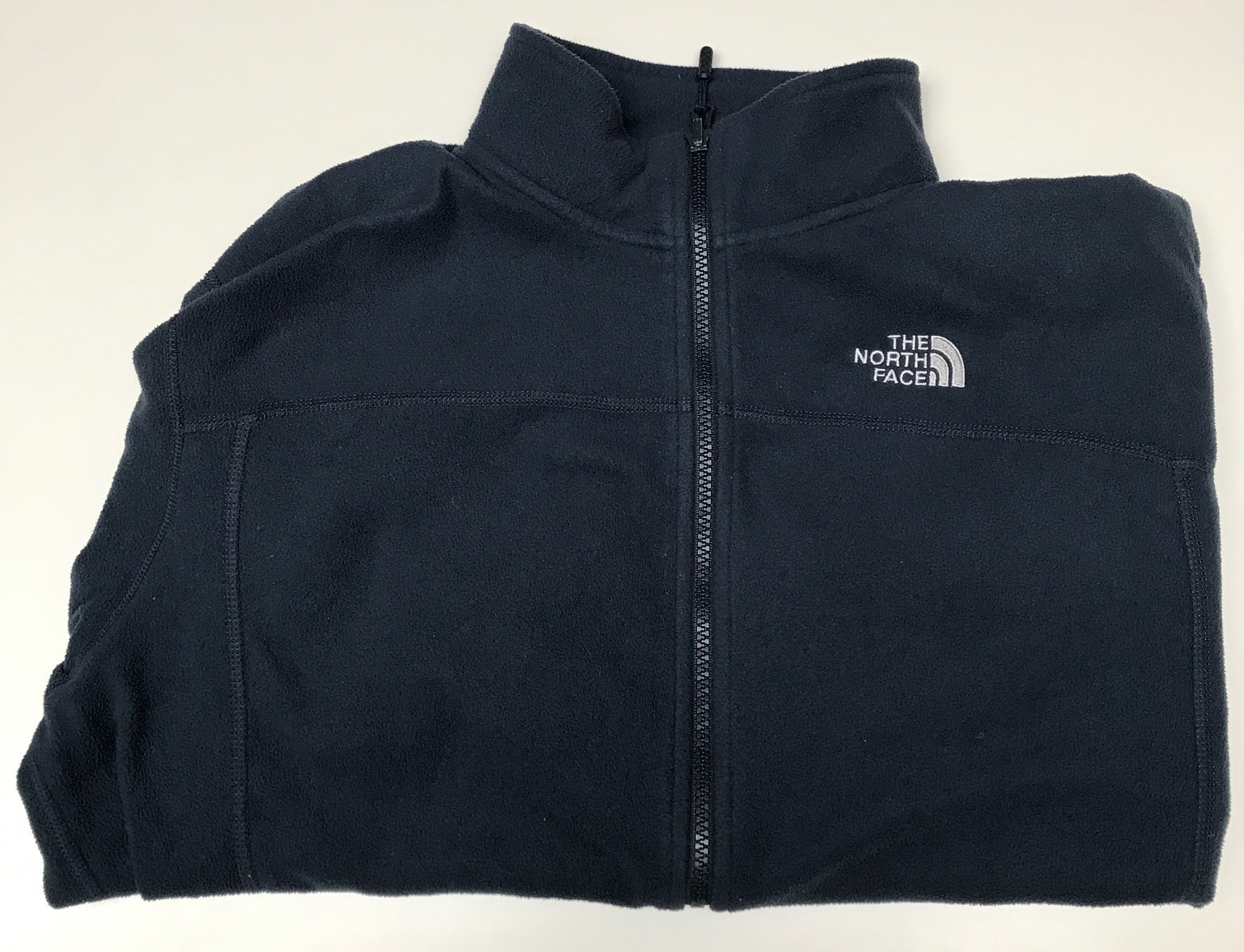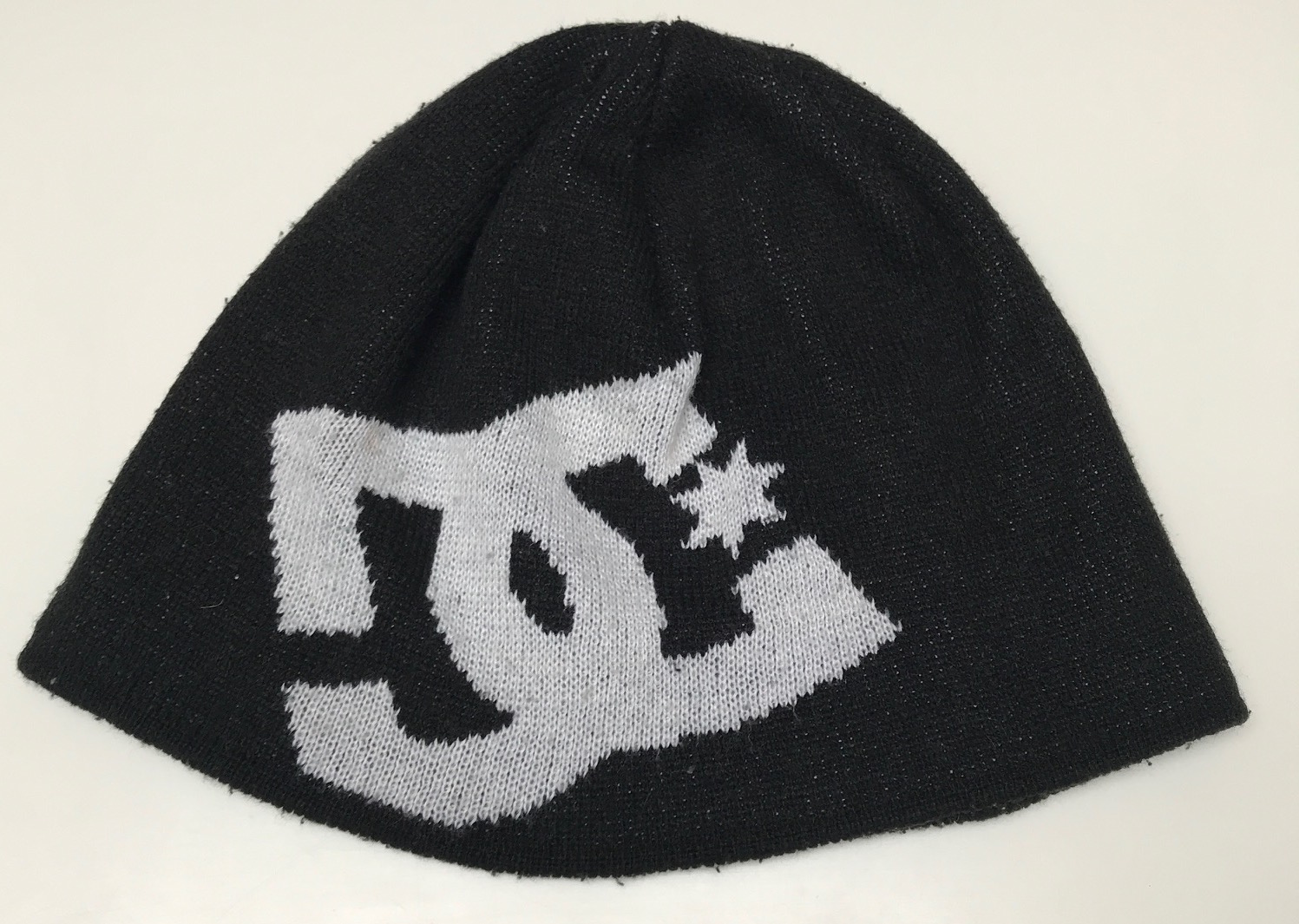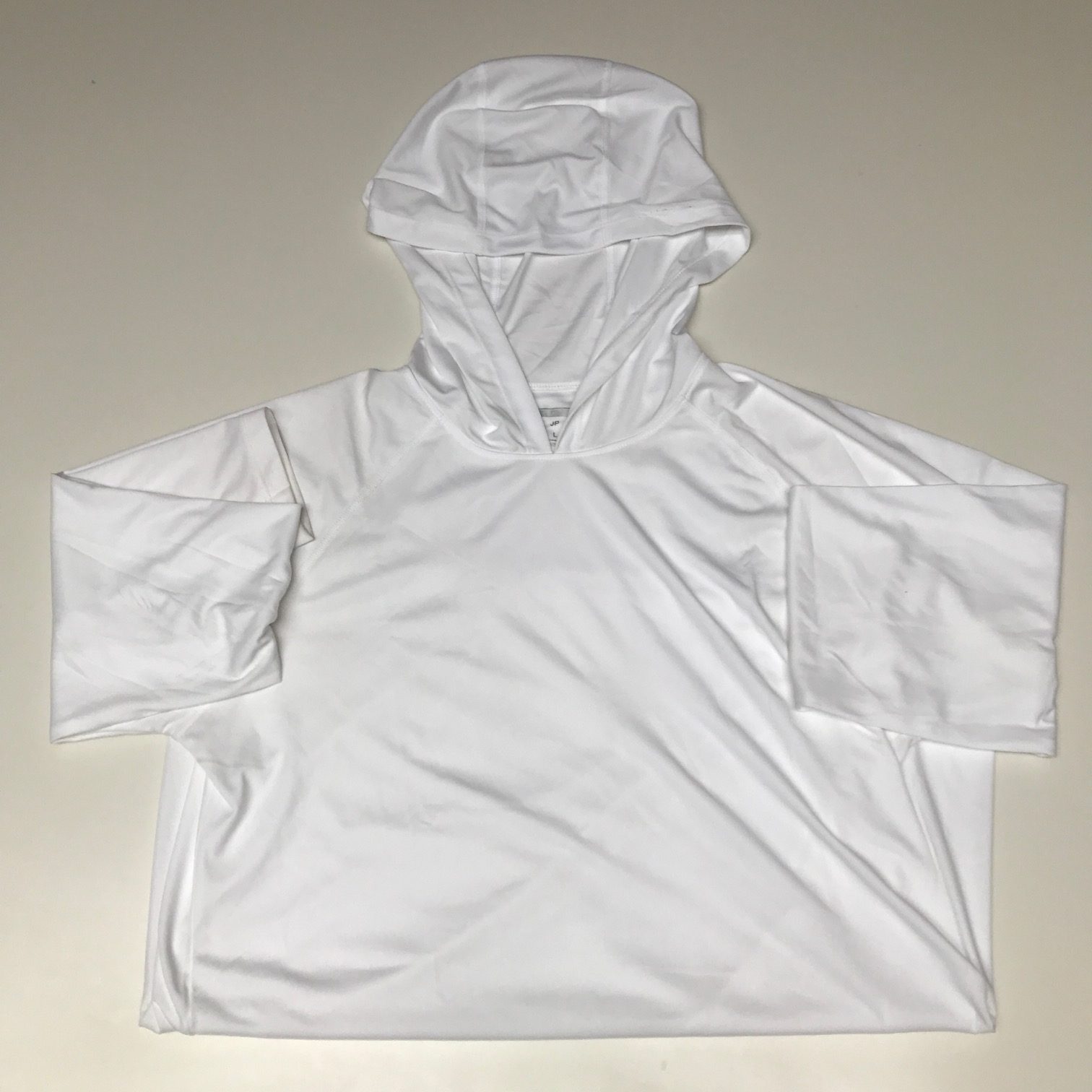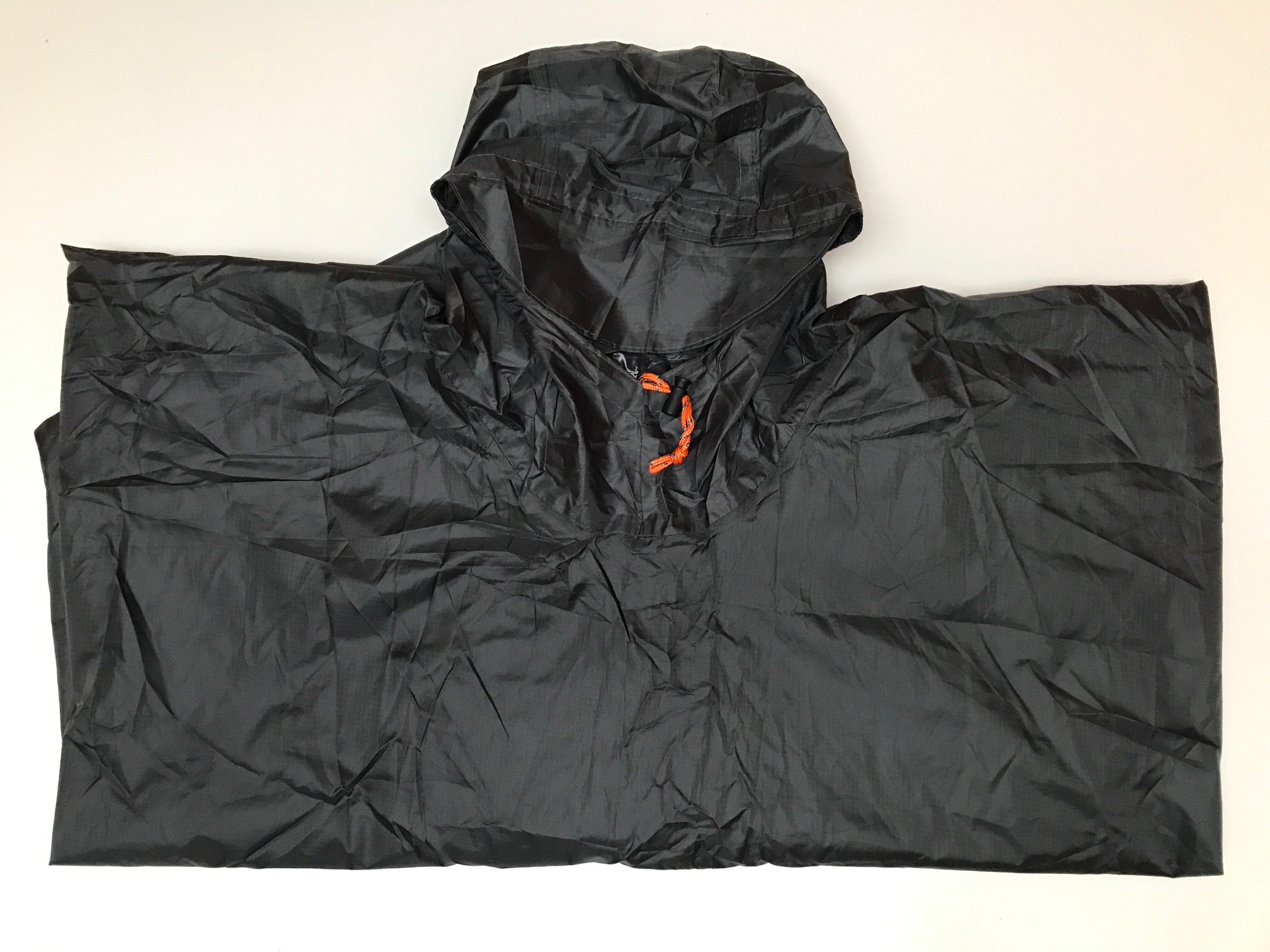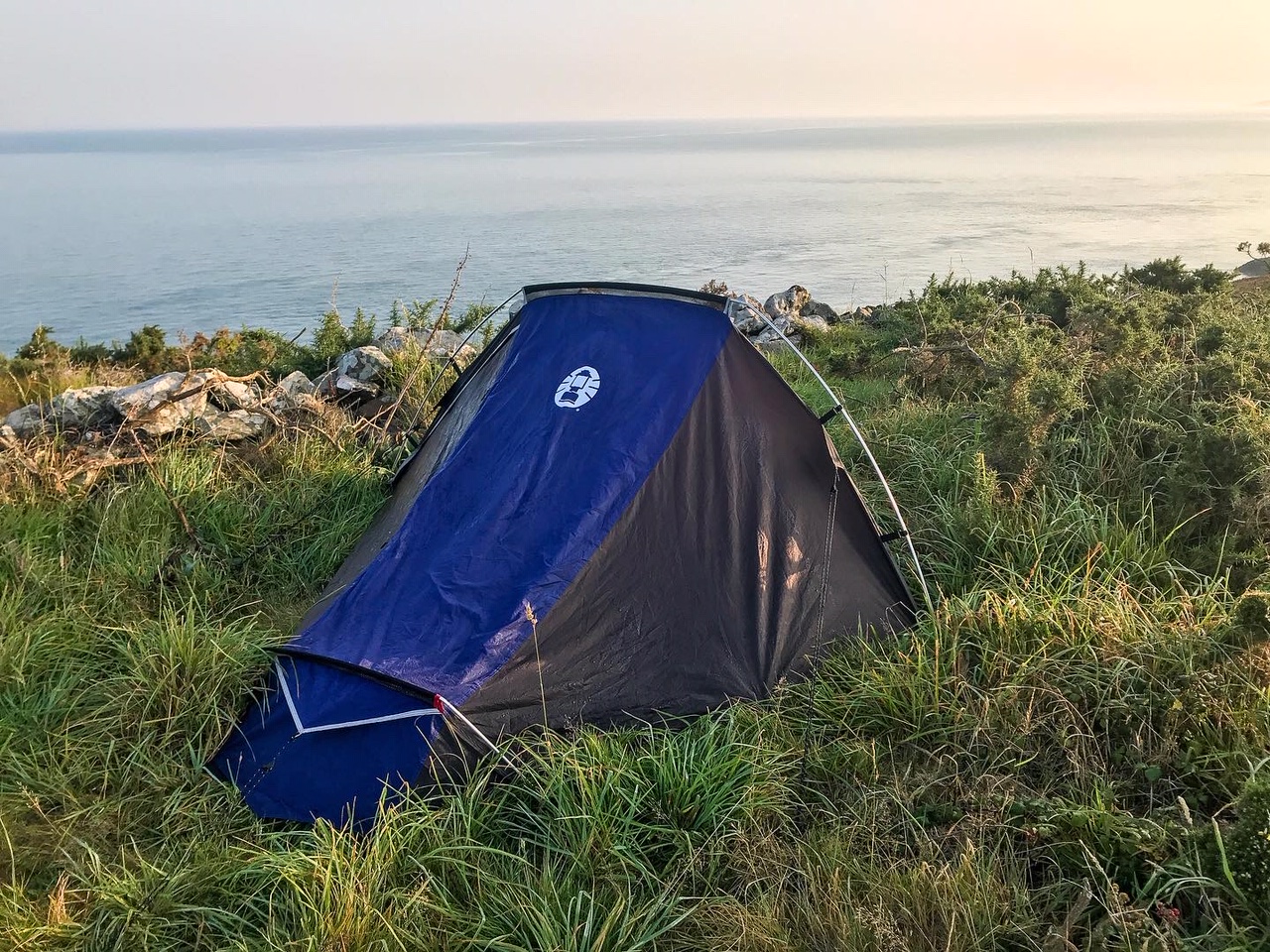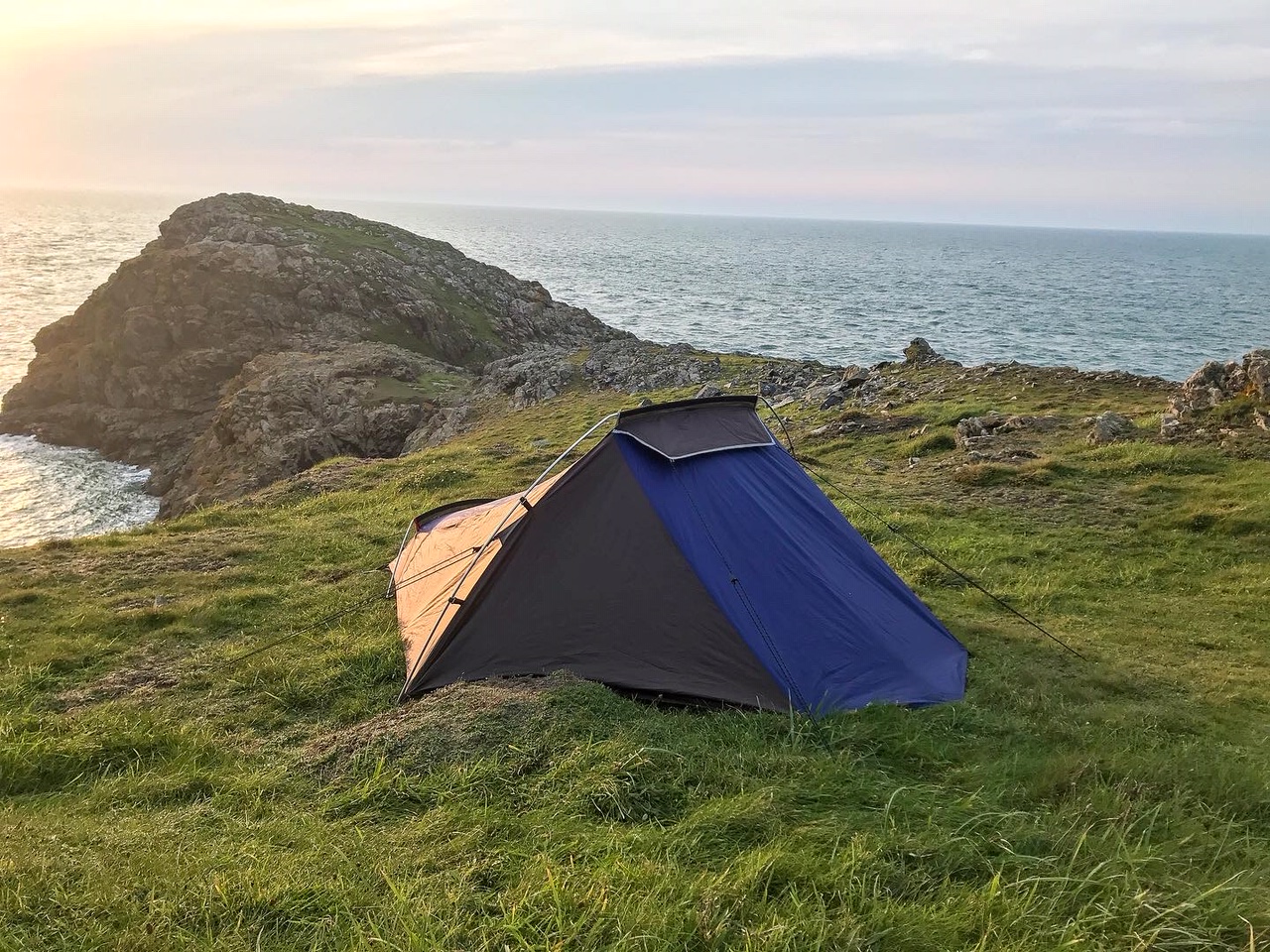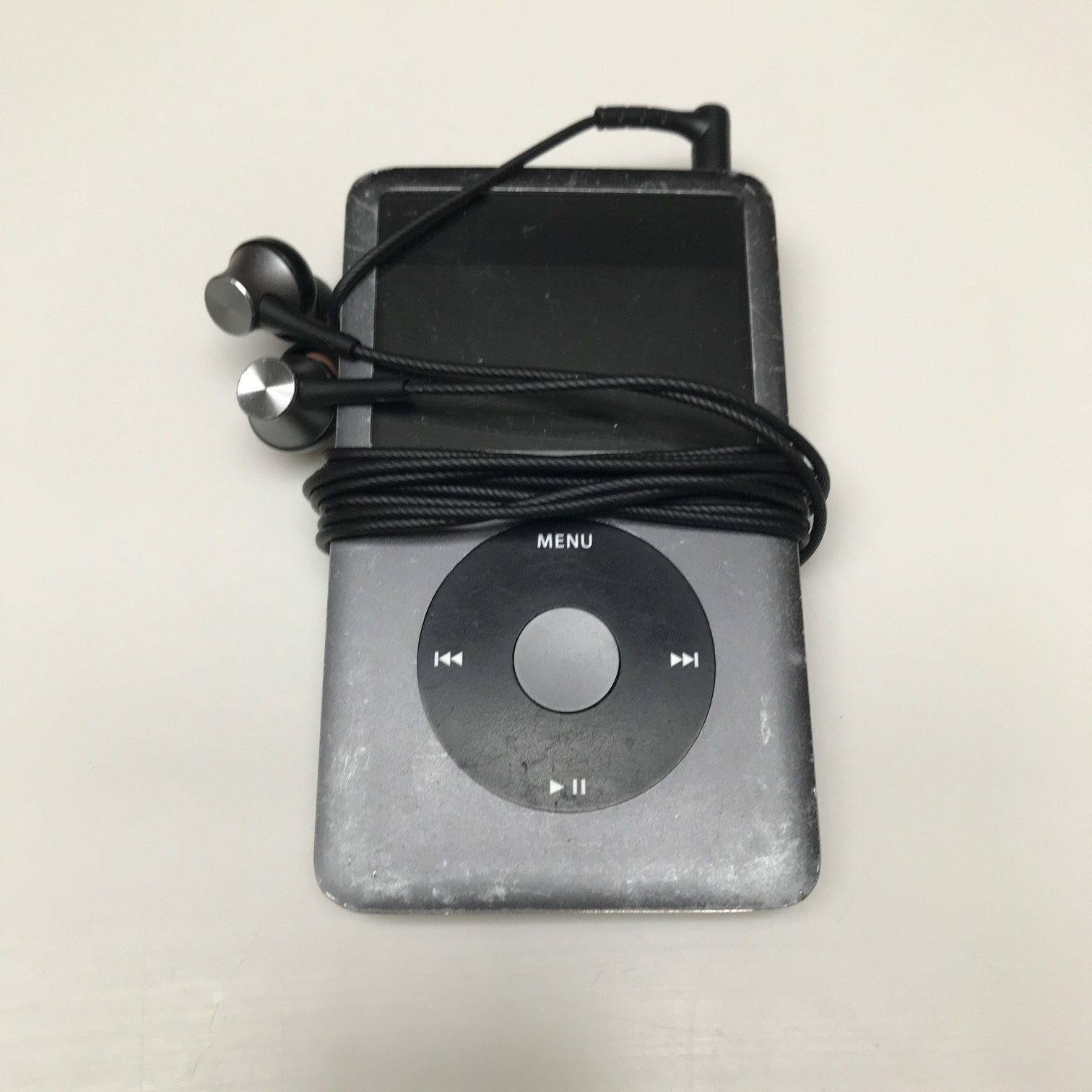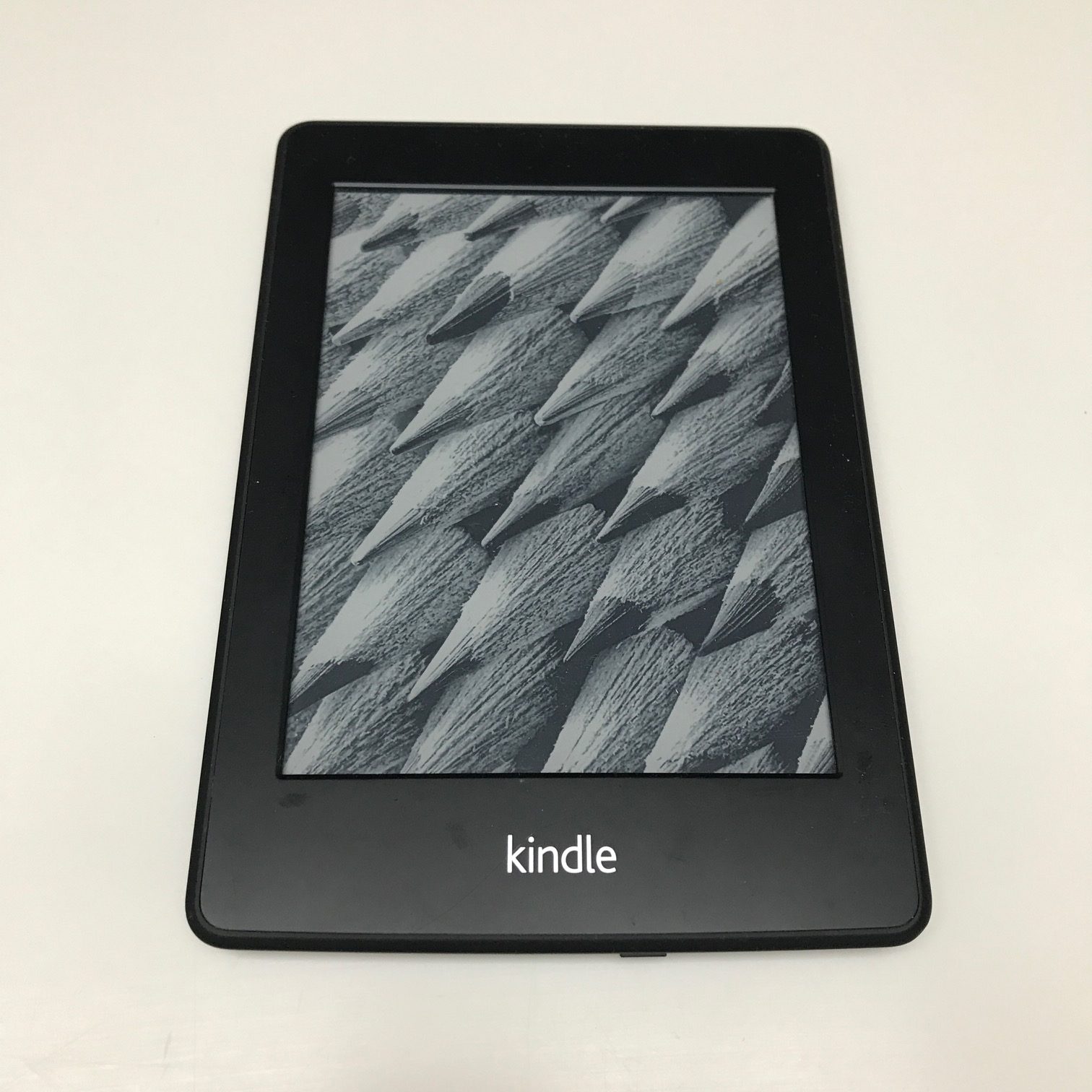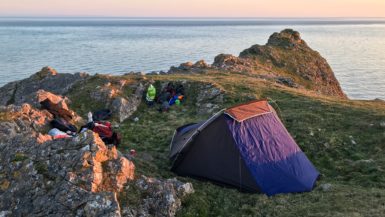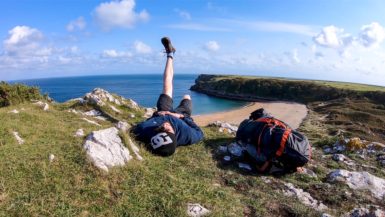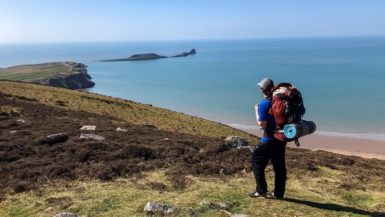Everything to Pack for A Multi-Day Hike
8 Minute Read
Some of the most beautiful and remote hikes in the world require you to be away for multiple days. Overnight wild camping trips or month long thru hiking adventures all require a specific multi-day hike kit list.
Knowing what gear to bring on these trips can be challenging, seemingly overwhelming, and downright confusing.
In recent years I’ve trekked in the Himalayas, been wild camping in Iceland & Norway, and walked all over the UK. Lately I’ve done long distance hikes along Hadiran’s Wall Path (95 miles) and the Pembrokeshire Coast Path (186 miles).
I’ve used all these trips to refine my hiking kit to be lightweight, comfortable, practical, and inexpensive where possible.
In this guide, I’m going to share this knowledge to help you pack right for your own multi-day hike.
- Footwear
- Clothing
- Sleeping
- Food & Drinks
- Miscellaneous
- Backpack
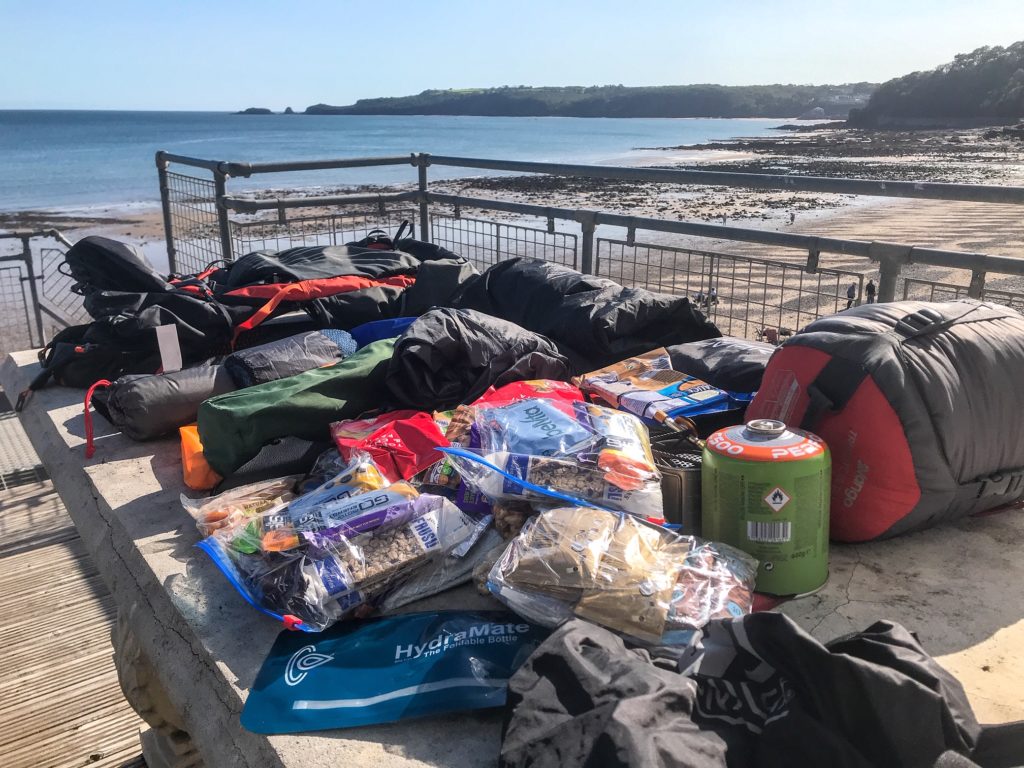

This page contains affiliate links. This means I make a commission if you buy a product I have recommended (at no extra cost to you). All recommendations I give are genuine and my own. Thanks for the support!
See also:
Day Hiking Gear Essentials
Hiking Food For a Week
1. Footwear
Let’s start with the most important bit of kit: your footwear. If you don’t get your shoes and socks right, you’re doomed to failure. (Dramatic but true).
I spent years hiking in clunky hiking boots and thick scratchy socks before I realised the error of my ways. For the majority of hikers, you’ll be following a trail in reasonable weather. By that I mean, you won’t necessarily be knee deep in bogs during a thunderstorm on every hike.
Because of this, I’ve opted to switch for trail running shoes, and I’m never looking back. I use Altra Lonepeak 4.0 shoes which are highly revered by the thru hiking community in the USA. I can see why.
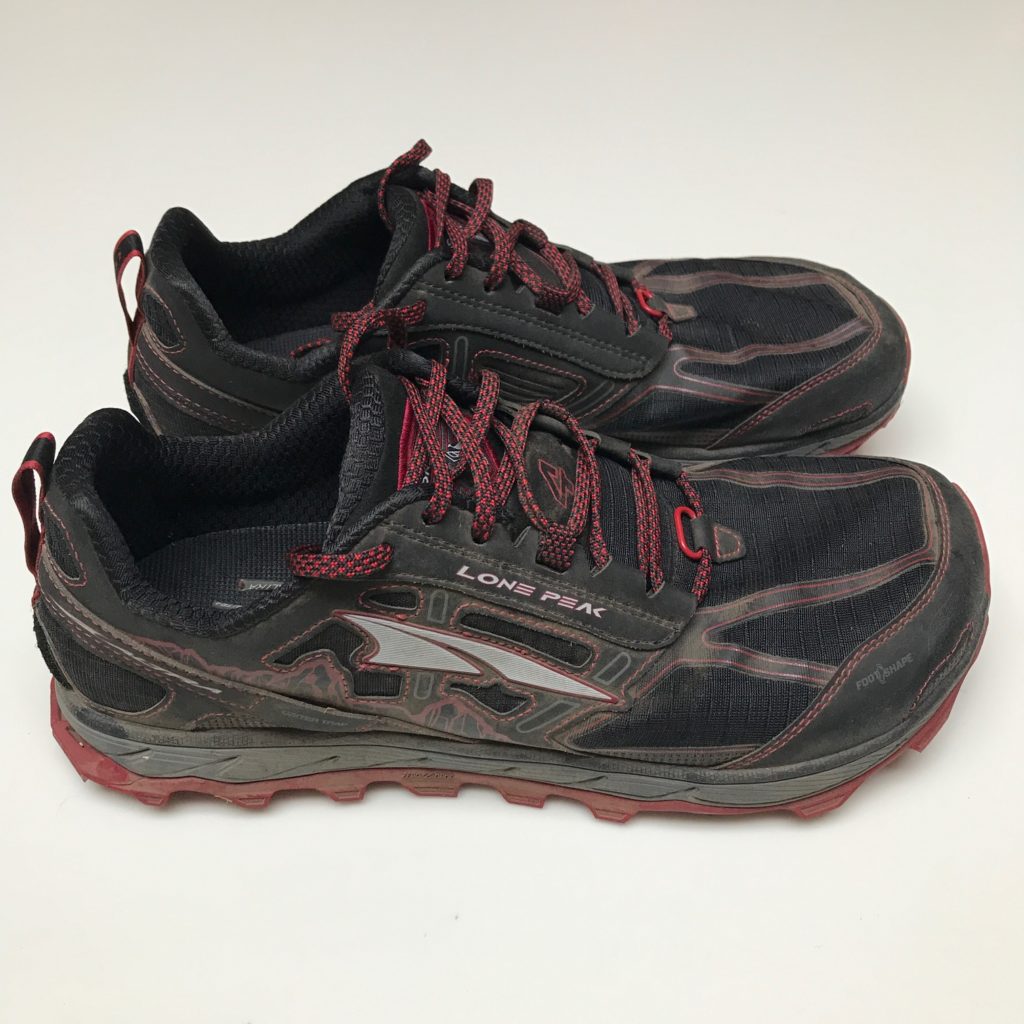

They are extraordinarily lightweight, grippy, and very comfortable. They are particularly spacious around your toes to let air in and to ensure your feet aren’t squashed together. I’ve put hundreds of miles down on my pair and still don’t have any blisters.
They don’t have ankle support and are only water resistant, not water proof. So, I’d recommended them for the majority of hikers unless you know the terrain you’re going across will be particularly extreme.
To go with the shoes I use a couple different brands of socks. You must avoid cotton. Cotton is rotten. Make sure you get a synthetic blend that will dry quickly.
My go to are Injinji socks because they have an unusual design that wraps around each toe like a glove. This means my toes are kept apart and won’t ever rub together reducing the chance of getting blisters.
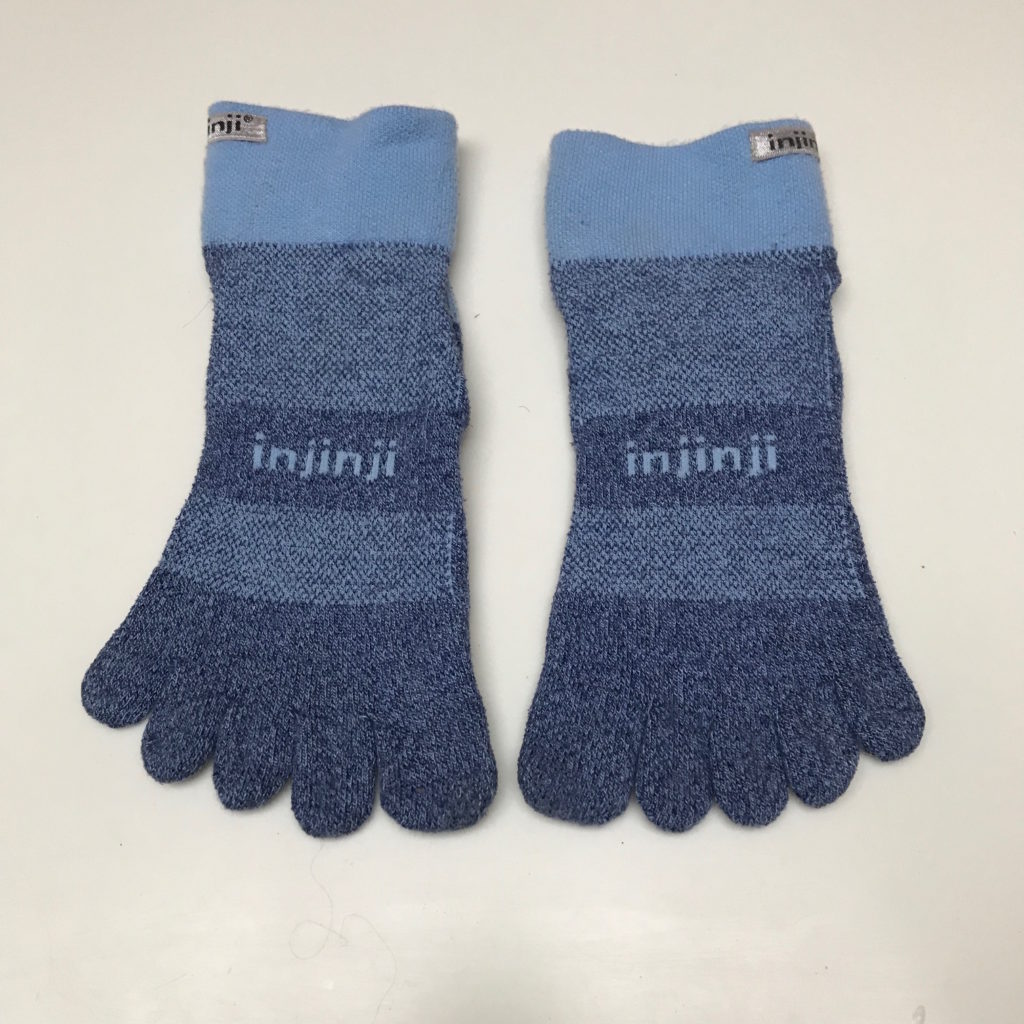

If that doesn’t sound like your cup of tea, Smartwool & Darn Tough socks are both excellent choices too. I prefer my socks just above the ankle but both brands have a range of options suitable for your preference.
Currently, I also bring a spare pair of Bridgedale walking socks should I need to change pairs for a day.
2. Clothing
Get a pair of trekking/hiking trousers that zip-off at the knee. I can’t tell you the number of times I walk with them as shorts during the day then zip on the trouser section during the evening or if the weather turns cold.
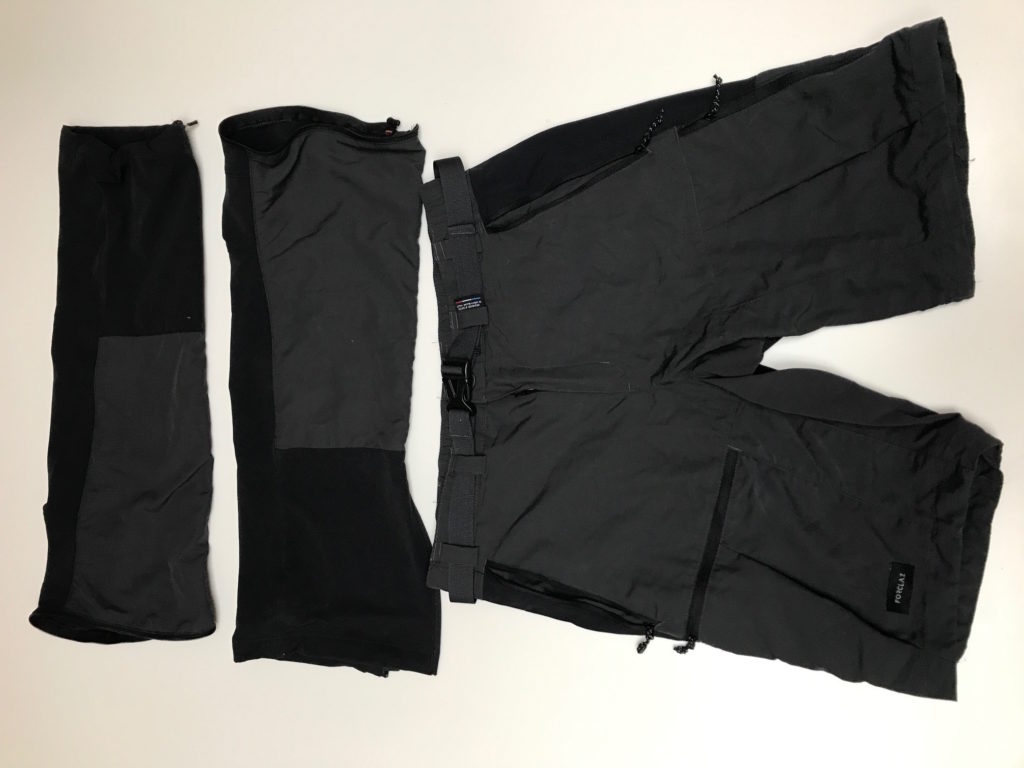

Having this multi-function option is really important. It’s the kind of thing that saves you a lot of space when packing. I used to just wear gym shorts but they weren’t suitable for hiking environments and lacked the ability to switch to trousers meaning I would also have to bring an extra pair of tracksuits adding further bulk to my kit.
I bring 2 t-shirts with me. One, an Under Armour sportswear t-shirt that I wear whilst hiking. It’s fast drying, comfortable, and highly breathable. All perfect for walking. I have a spare t-shirt which is just a casual one to wear in the evenings, meaning I have something clean to change into.
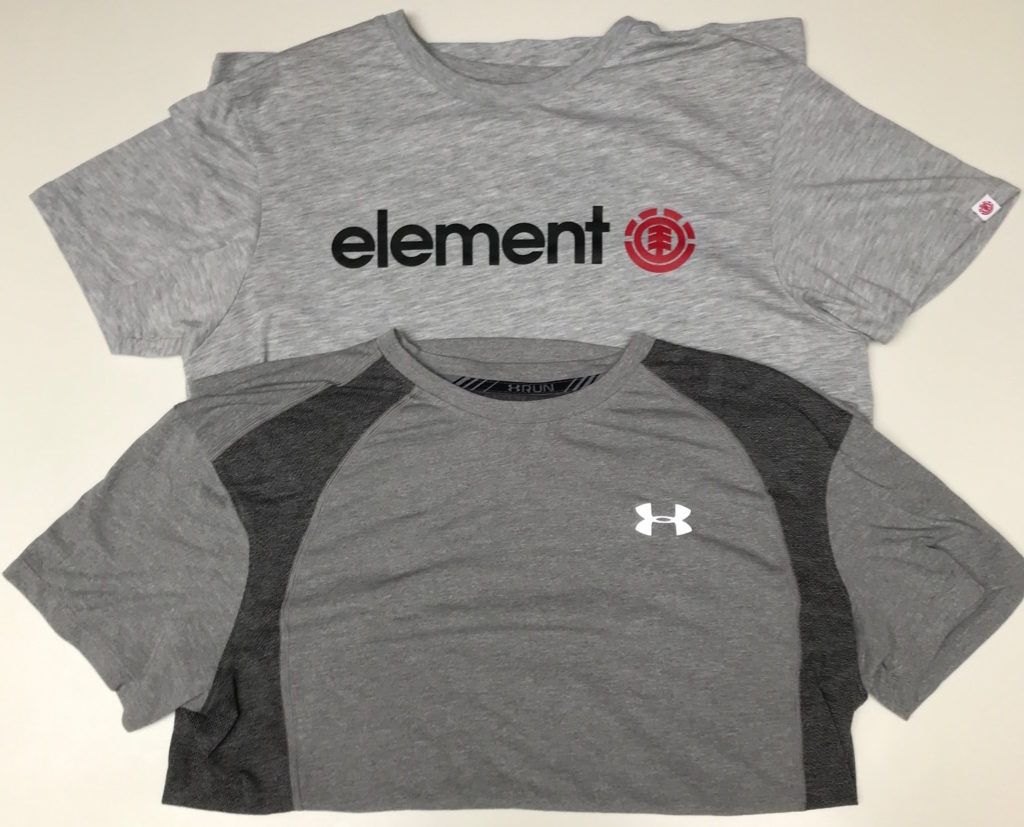

I carry 2 pairs of underwear. You can go for thermal sportswear but I tend to use normal day-to-day ones. I also carry a spare pair of cotton ankle socks but only to wear when I’m sleeping each night.
To sleep in, and for extra warmth should I need it, I have a pair of thermal leggings and a long-sleeve thermal top. Both items are light and pack down very small making them great for layering.
To keep warm I have a North Face zip-up fleece which is amazingly comfortable and has been a staple in my kit list for years. I then carry a pair of running gloves and an old beanie hat which I often find myself sleeping in also.
I have a North Face shell jacket to go over the top of all this but it’s a little clunky. I’m looking to upgrade to a down jacket as they are super light and easy to pack – I suggest you do the same.
For rain cover I don’t actually use waterproof trousers or a rain jacket. I use a rain poncho. I find it’s more suitable to cover both myself and my bag. It also doubles up as a tarp for me to sit or sleep on.
If the weather is going to be particularly sunny I have a baseball cap and some sunglasses. I also carry a long-sleeve sun hoody which is perfect for protecting my body from high UV rays and keeping my skin cool.
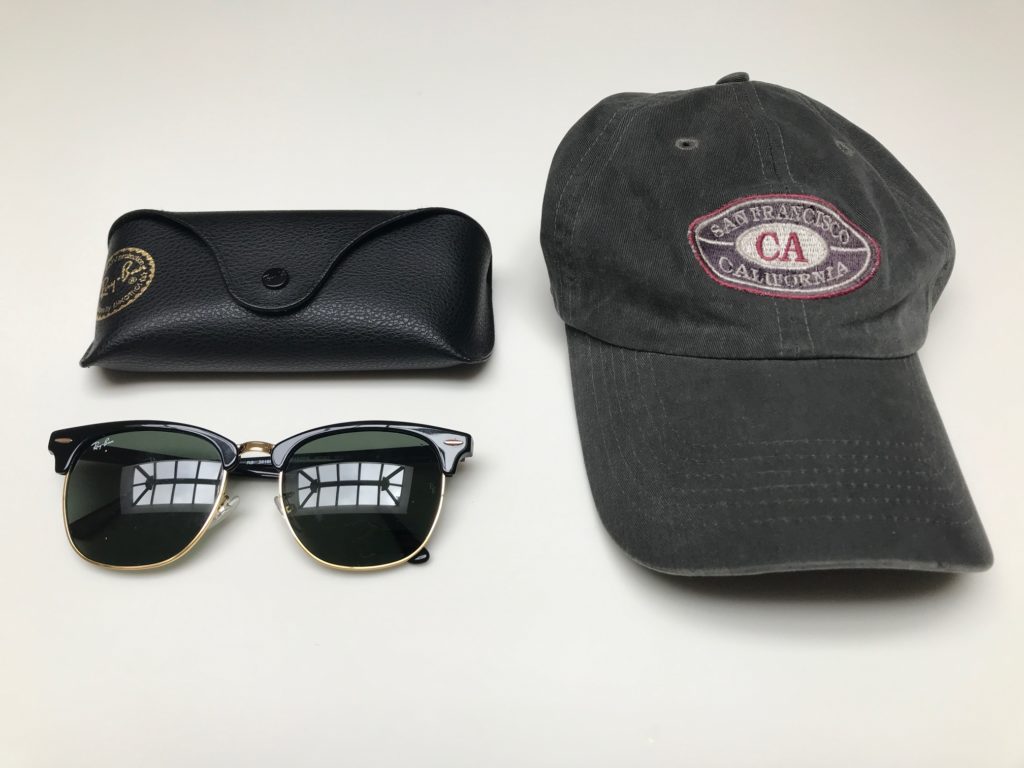

It may sound strange but I actually first got the inspiration when hiking in South Korea. Everyone seemed to be wearing these long sleeve shirts in the heat but after speaking to some locals they explained why.
It’s breathable and air wicking to keep your skin temperature lower. It also means you don’t have to use suncream. This makes a huge difference if you’re wild camping and have no way of washing other than using baby wipes!
3. Sleeping
If you’re going on a multi-day hike, you’re going to need to get your sleeping set up right. My tent is a Coleman 2-person. It’s about 2.3kg in weight and is a great option for a durable multi-day hike tent that doesn’t break the bank.
I use a Vango 3-season sleeping bag. It packs down fairly small, not as small as a down bag but for synthetic it does I good job. It’s kept me very warm and comfortable on many a cold night.
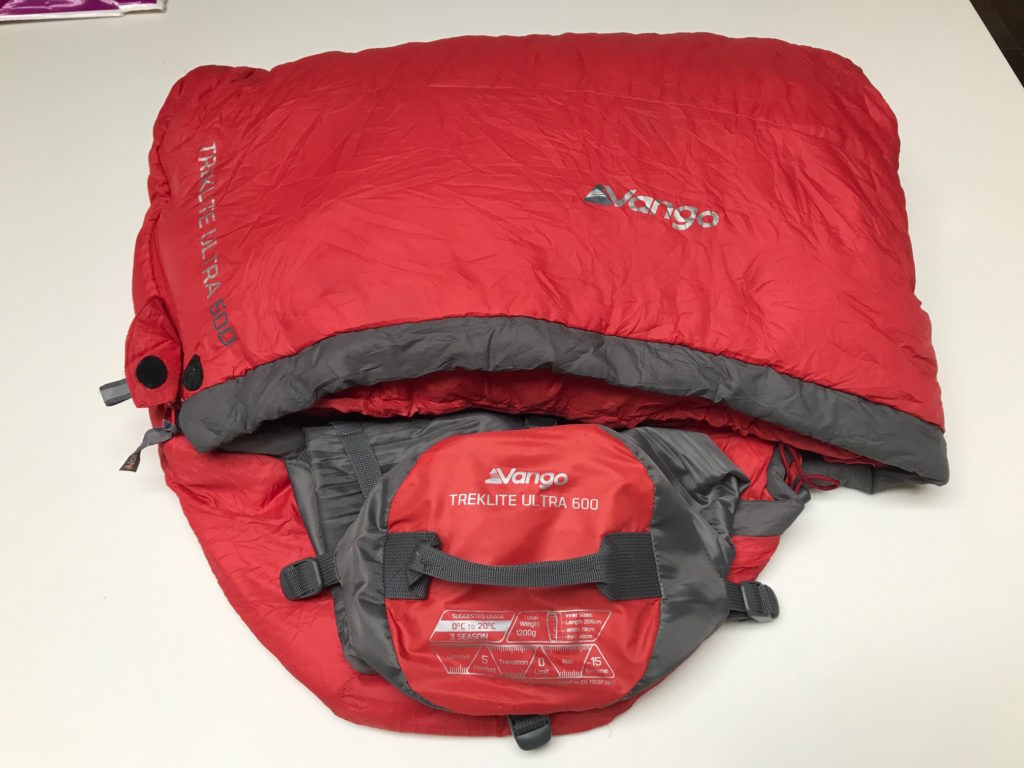

I use an inflatable sleeping mat. This is a necessity. I went a couple years on foam mats and having the inflatable mat is a game changer. Not only is it smaller to pack, but it’s so much more comfortable to sleep on!
I also carry a small blow up pillow. You can use your clothes as a pillow but I think this is such a minor addition to you pack size but it has such a big impact on how you will sleep. I think it’s more than worth it.
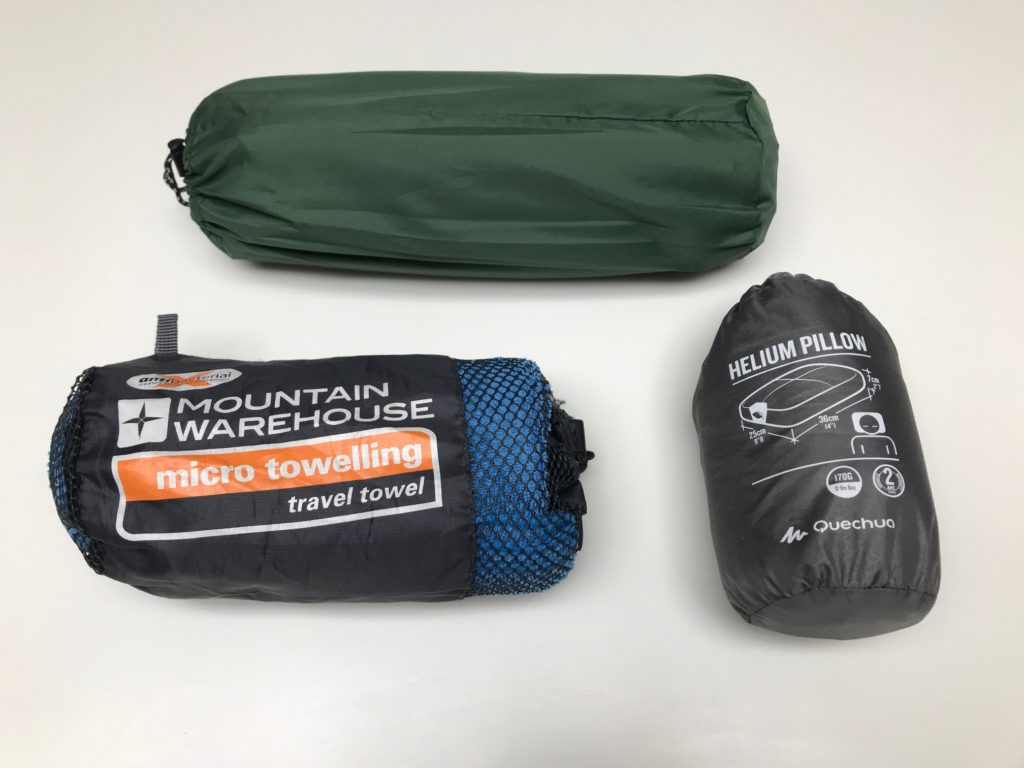

Lastly I have a microfibre towel that I carry with me. This is to use when showering or washing but sometimes I also lay it down beneath my sleeping mat just to add a thin extra insulation layer if it’s really cold or if I’m camping on rough ground.
4. Food & Drinks
When on a multi-day hike, you’re going to need to bring you own food and water. Even more so if you plan on wild camping and cooking your meals multiple times with no opportunity to restock.
What you pack has to be high in energy, non-perishable, easy to consume, and hopefully quite tasty! Common hiker snacks include: nuts and nut mixes, trail bars, dried fruit, beef jerky, nut butters, protein bars.


For dinner I cook a lot of pasta and rice pouches, and for breakfast I usually make porridge and a coffee or tea to get me going in the morning!
See also:
Hiking Food For a Week
To cook all my food I use a camping stove and a gas canister. I will probably upgrade to a Jet Boil at some point but for now these bits of kit have got me through a number of trips without letting me go hungry.
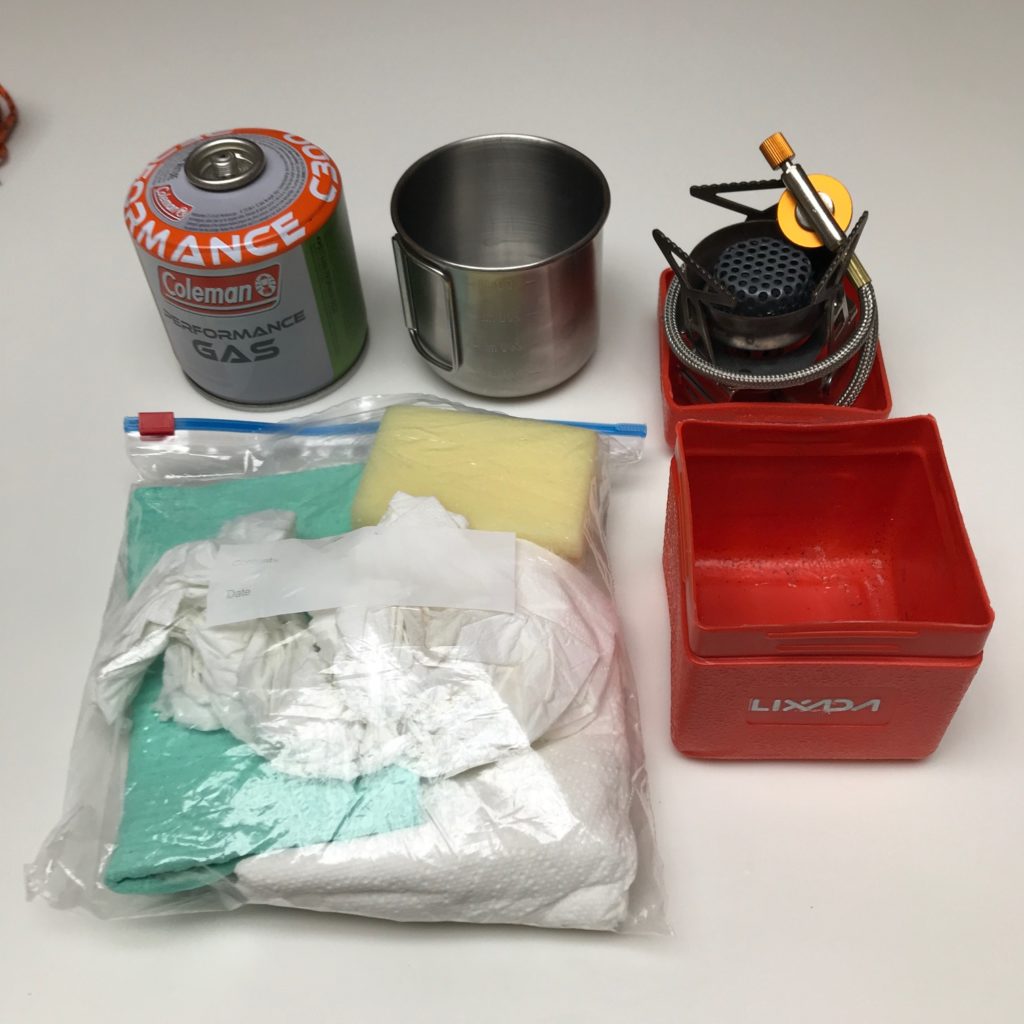

I bring a 400ml stainless steel cup which I boil all my water in and also eat out of. The only utensil I bring is a spork to stir and eat from. That’s all you really need!
To ignite the stove I carry 2 lighters, and a small cooking kit which includes: a home-made layer of tinfoil to insulate the cup and speed up boiling, a bin bag for trash, a sponge with a little detergent on it to wash up, and some paper towels to help with washing/drying or cleaning up any food mess before packing my kit away.
I carry a couple of soft-pouch water bottles to drink from when on my multi-day hike. They fit nicely into the sides of my bag and reduce in size the more I drink.
I always bring a water filter with me to drink from rivers or streams and to fill up from any taps I don’t think are clean. It’s such a small bit of kit and really helps keep your water sanitised.
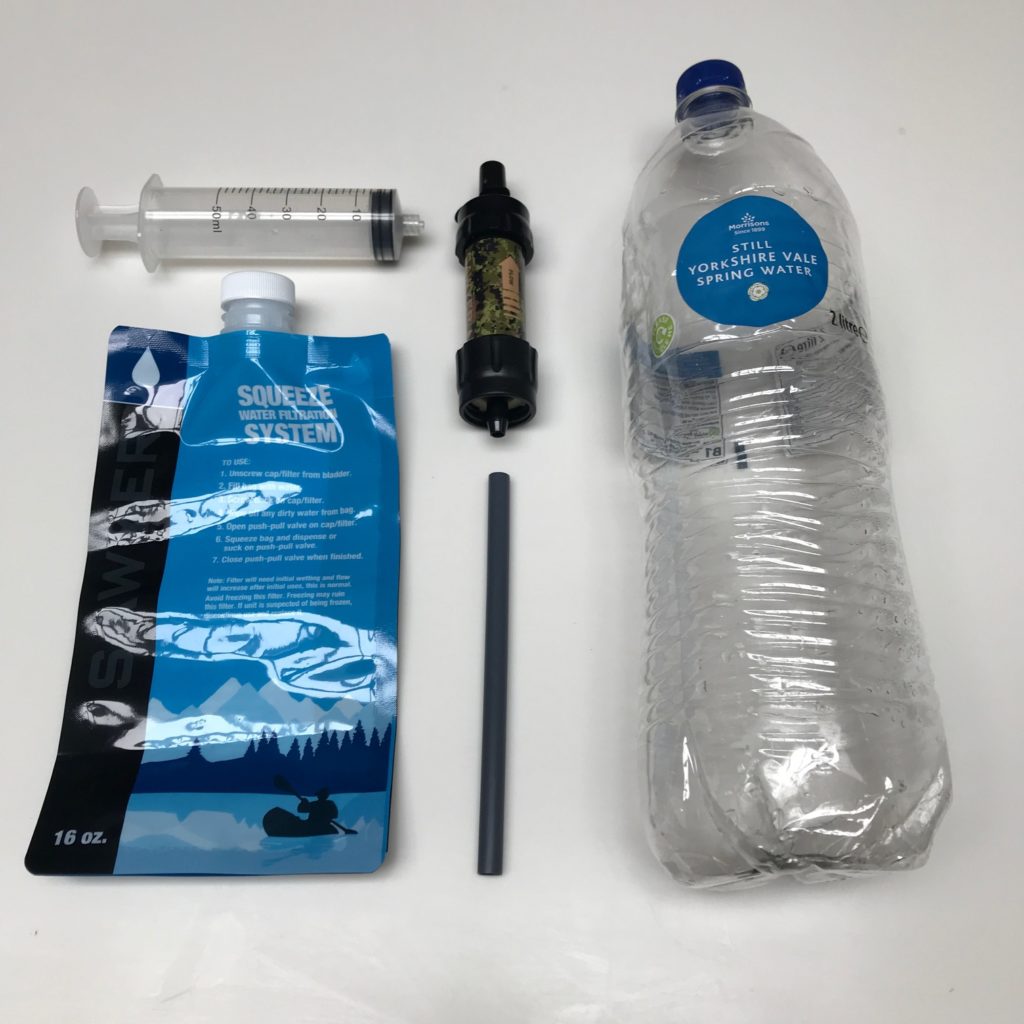

5. Miscellaneous
You should always bring a phone with you or a device that allows you to contact others such as a walkie talkie. I use a phone because I like to take photos on it and to track my walk on the AllTrails app.
I have an old school iPod Classic I use for podcasts and listening to music. Generally, I don’t use it when walking but it’s great for the evening and the charge is longer than on a phone.
I always take my Kindle Paperwhite and buy a couple books before I go that I might want to read. That’s my main source of entertainment in the evening and reading out in nature watching the sunset has to be one of life’s joys.
It’s backlit so I don’t need a head-torch to read; it’s much lighter than carrying books and the charge lasts for a week or two depending on the brightness used.
I film all my hikes on the GoPro Hero 7 Black with a tripod. It’s durable, waterproof, lightweight, and can film amazing quality videos in 4K. Perfect for hiking. It also chargers fast so is perfect when on the move and if you only have 20 minutes to charge at a cafe or bus stop!
See also:
Hiking videos
I have a portable charger that is great for keeping all these electronics topped up should I be in the wild for a few days and charging cables for all of the above.
I’ve toyed around with investing in a solar charger but it seems they are still too inefficient and heavy to be practically useful.
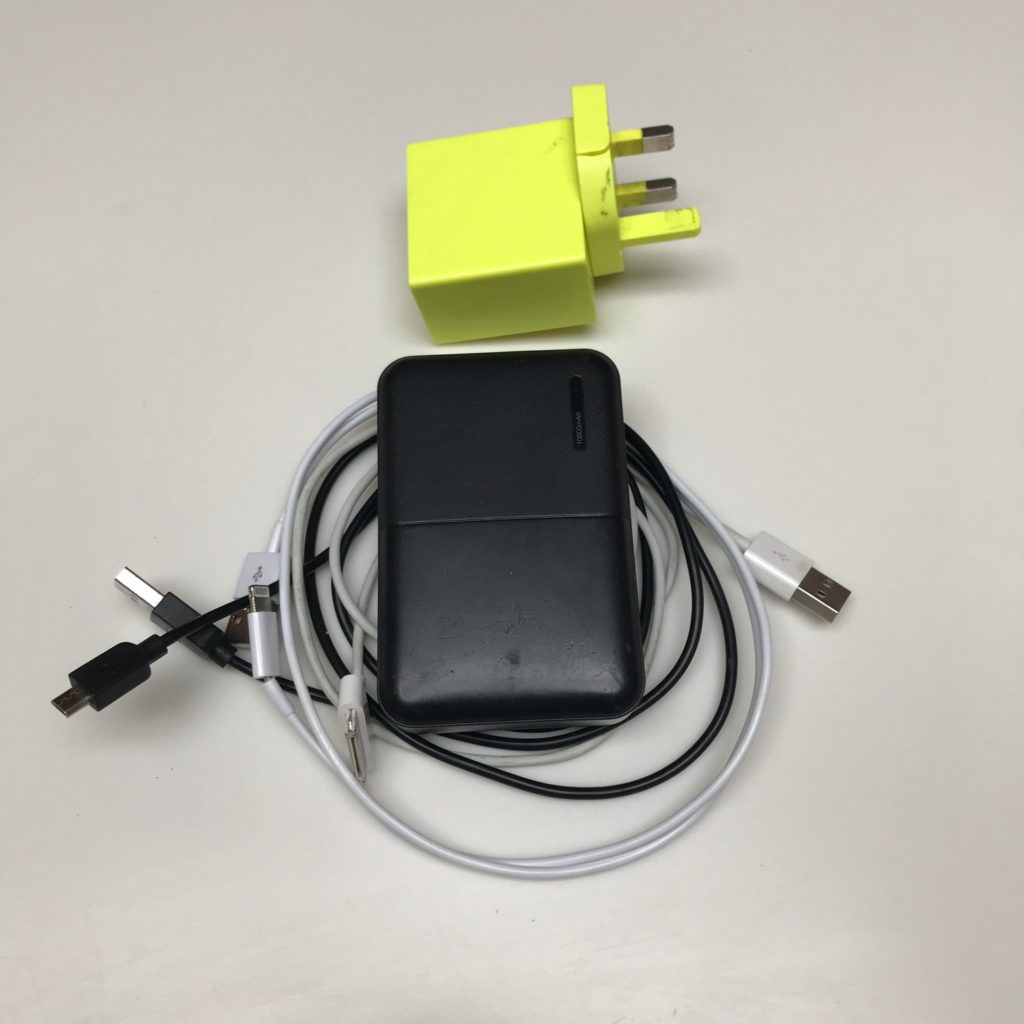

I carry a small microlight torch to use when it’s dark. Some people prefer to use head torches but each to their own!
I carry a small medical kit containing the following items:
- Paracetamol – or any other painkiller
- Ibuprofen – or any other anti-inflammatory
- Hay fever/allergy tablets
- Bandages and gauze
- Lots of plasters (waterproof and durable) – various sizes
- Blister plasters
- Bandaging tape
- Alcohol swaps
- Vaseline or any soothing lip salve (make sure it includes SPF)
- Imodium – or any other diarrhoea relief
- Rehydration salts
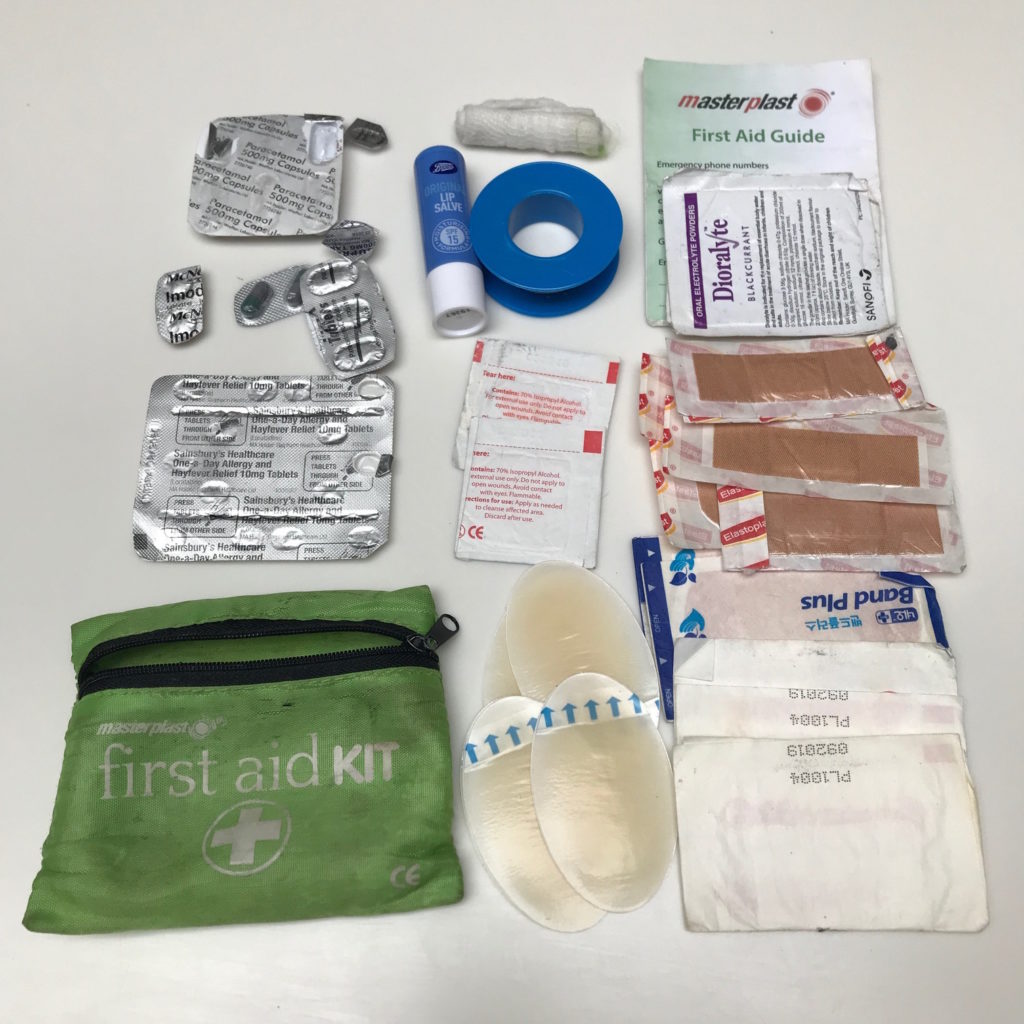

I sometimes get strains in my ankle and aches in my knees so carry an extra ankle strap and a tubigrip knee support just in case. If you know you have similar issues, it’s worth thinking about this in advance as it’s unlikely there will be anywhere to buy these items on the trail.
Lastly I bring a selection of small travel toiletries:
- Toothbrush
- Toothpaste
- Deodorant
- Suncream (at least SPF 30)
- Hand sanitiser
- Wet wipes – a very useful item if you don’t have access to a shower!
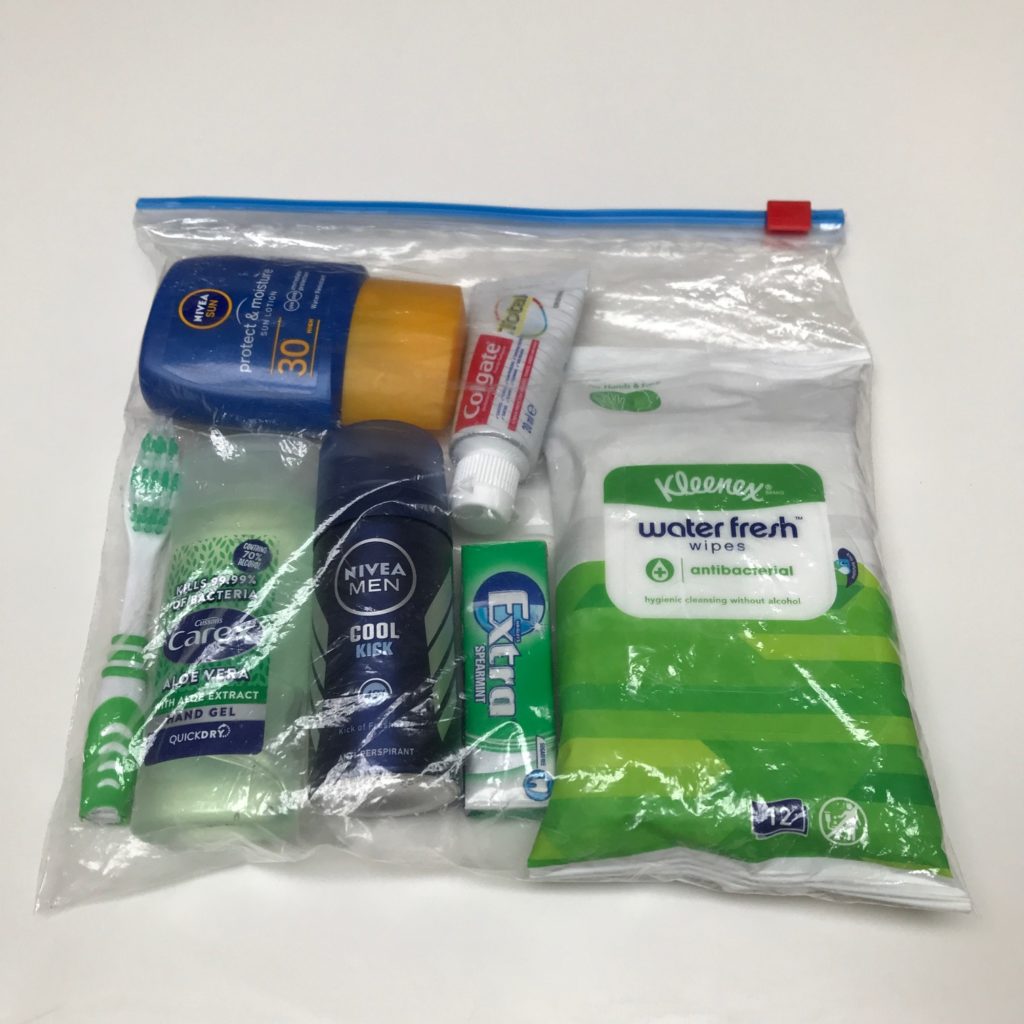

Other optional items you may want to consider taking: an OS map, a compass, a notepad and pen, hiking poles, a padlock, a camera.
Think carefully on each extra item you bring as all will add weight.
6. Backpack
Second to your footwear, this is your most important item. If you get it wrong you’ll be in agony for the whole trip. Make sure you invest time doing your research and finding out what suits your needs. Consider going in-store and getting your back measured to make sure your bag fits right!
In my opinion, for fair weather hiking, you shouldn’t need a bag that’s any bigger than 50 litres. If you do then you’ve overpacked or your gear is too clunky and you need to invest in some new items.
I use the Osprey Exos 48 backpack. It’s been designed specially for long distance thru hikers and backpackers. It ticks a lot of boxes in terms of comfort, weight, and pack size.
It’s a great bag for a multi-day hike and highly functional for a long-distance walking trip. It’s come with me on a 95 mile hike across Hadrian’s Wall and a 186 mile hike of the Pembrokeshire Coast Path. So I know it works.
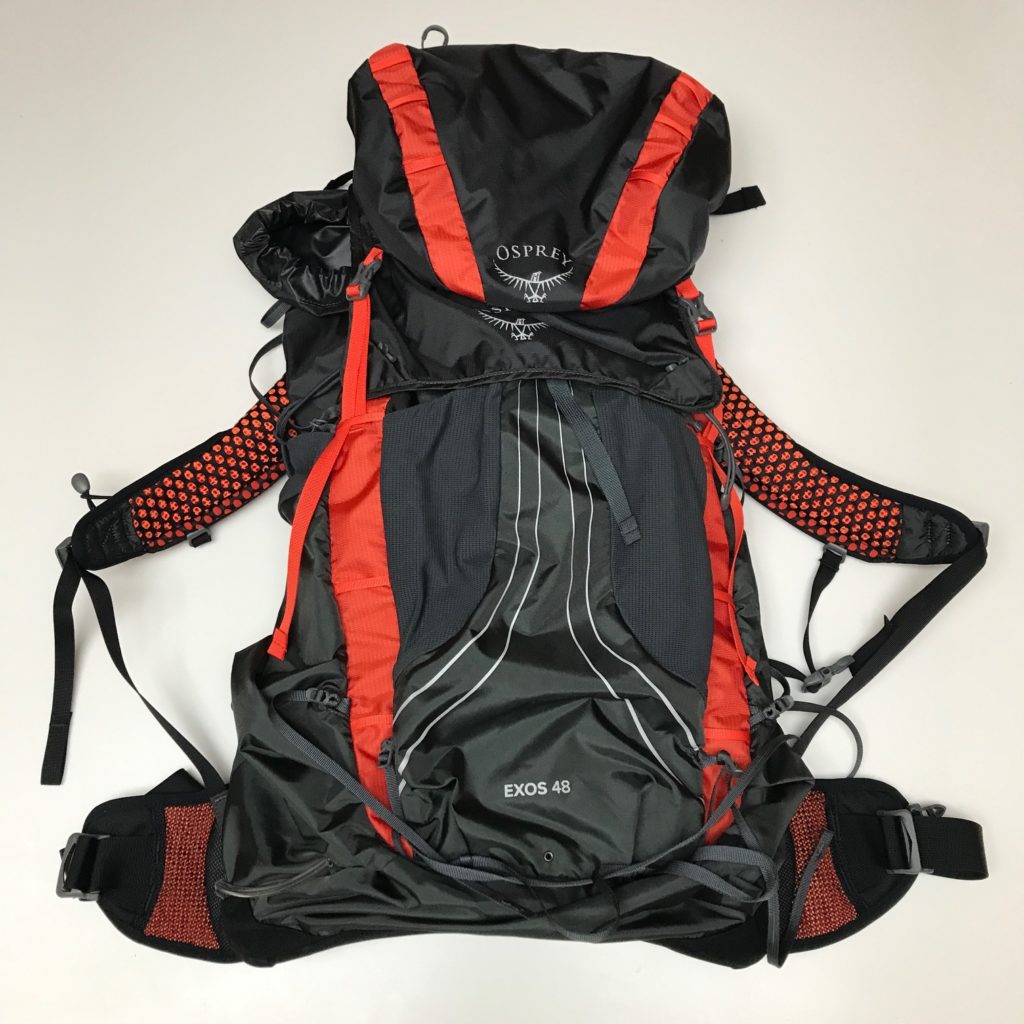

I purchased an additional rain cover to provide extra waterproofing for really bad weather. I put everything inside soft waterproof stuff sacks before placing them in my bag. That makes it easy to find the items I’m looking for (bags are colour coded). It also allows me to separate items into groups such as dirty clothes from clean whilst ensuring everything stays dry.
In addition to this, I pack all my food and toiletries into zip-lock plastic bags so that everything is kept together and quick to find. This also prevents leaks or spills from entering the rest of the bag.
Before You Go
Thanks for reading my multi-day hike kit list. Check out my day hiking gear essentials and hiking food post for more trip information!
If you are new to Walk Wild you can check out the About Me page to learn about who I am and what made me want to be a travel writer.
Have I missed anything out? Please comment below, let me know what you think and ask if there’s anything else you want to know.
For more hiking and adventure travel, follow me on Twitter and Instagram.


